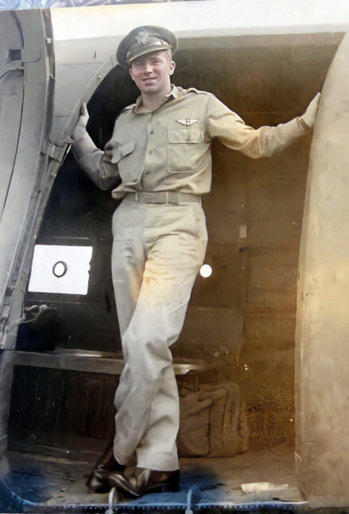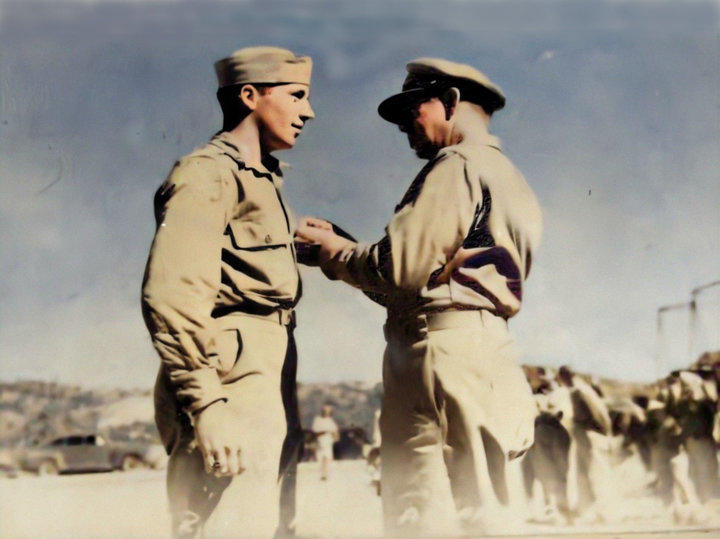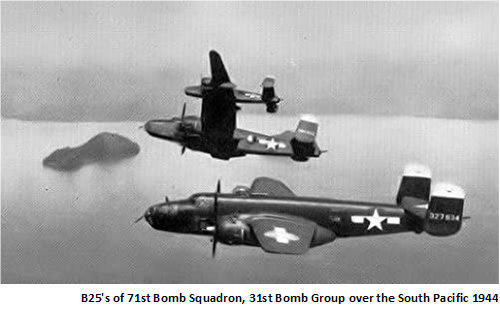
copyright © Wartime Heritage Association
Website hosting courtesy of Register.com - a web.com company
Wartime Heritage
ASSOCIATION

Remembering World War II
William Richard Shank

Name:
William Richard Shank
Rank:
Lieutenant
Service Number:
O-659595
Service:
71st Bombardment Squadron,
38th Bombardment Group,
US Army Air Force
Awards:
Air Medal with Oak Leaf Cluster
Date of Birth:
March 29, 1919
Place of Birth:
Cape Breton, NS
Date of Enlistment:
October 28, 1941
Place of Enlistment:
Boston, Massachusetts
Age at Enlistment:
22
Address at Enlistment:
Suffolk Co., Mass.
Occupation:
Actor
Height:
5 feet, 5 inches
Complexion:
Ruddy
Hair Color:
Blonde
Eye Color:
Brown
Date of Death:
July 27, 1943
Age:
24
Cemetery:
Manila American Cemetery, Philippines
Grave:
Tablets of the Missing
William Richard Shank was the son of John R. Shank (1868-1920) and Mary Ann (McKenzie) Shank
(1869–1934). His mother was born in Prince Edward Island; his father – in Chatham, New Brunswick. He had
3 older sisters, Margaret Shaw Shank (1893-1971), Annie Carswell Shank (1898-1969), and Catherine Pearl
Shank (1904-1985), and two older brothers John Malcolm (1901-1964), and Henry Alexander ‘Harry’ Shank
(1907-1987).
William was either born in Prince Edward Island or Nova Scotia, and was a Nova Scotian (resident) from
1921 to 1924. William’s father died in Cape Breton in 1920, and William and his mother were living in Glace
Bay, Cape Breton in the 1921 census. On the census, his relationship to the head of the household, his
mother, states “Bro son” or brother’s son, - so he may have been a son of one his mother’s 3 brothers. In
other words, his adopted mother’s nephew (from her side of the family).
The family immigrated to the US via Vanceboro, Maine in 1924 and settled in Boston, Mass. In the 1930
census, their widowed mother and all the children were living at 21 Shafter St in Dorchester, Mass., with
the exception of Annie, a nurse, who was living at the home sanitorium where she worked at 42 Beaumont
St in Boston. William’s mother, older sisters Margaret and Catherine Pearl, and older brothers John and
Harry resided at 21 Shafter St in Dorchester, Mass. William’s sister Margaret was also a nurse, working as
such at a local department store.
William studied at Northeastern University in Boston, Mass. and played on their hockey team. He registered
for the US Draft on October 16, 1940, in Dorchester, in Boston, Mass. He was living with his older sister
Margaret at 19 Bradlee St in Dorchester, Mass. On his draft registration he listed his sister Margaret as his
mother (his mother had died in 1934 when William was only 15 and she likely had become his legal
guardian then).
By 1940 (as per the census), William’s sister Catherine is no longer in the home, she was living and working
as a servant in the home of George W Mansfield in Brookline, Norfolk, Mass. His older sister Annie had
moved home again and was living with the family again.
William enlisted in October 1941 entering the service as an Air Cadet with the US Army Air Force. William’s
brother John enlisted in the US Army October 13, 1942 (Service No. 31210866) and served with the
Transportation Corps until July 1945, and his brother Henry Alexander also served in the US Army Air Force
(as a Sergeant) from December 23, 1942 to October 7, 1945.
Airman William transferred to the Pacific with the 71st Bombardment Squadron. On August 12, 1942, the
71st Bombardment Squadron (Medium), 38th Bombardment Group (Medium), moved from Batchelor Field,
Australia (a dispersal field for Allied aircraft), to Breddan Field, Australia with B-25s. Their first mission
would be September 15, 1942.
In New Guinea, William was presented the Air Medal with Oak Leaf Cluster (for flying in 34 combat missions)
by the commander of the Allied Air Forces in the Southwest Pacific Area (SWPA), General George Churchill
Kenney. Lieutenant General George Churchill Kenney (1889-1977) was born in Yarmouth County, Nova
Scotia.
At 0800 hrs. on July 27, 1943, B-25D-15 Mitchell Serial Number 41-30496 took off from 17 Mile Drome
(Durand) near Port Moresby piloted by 1st Lt Ercoli Ducci, on a practice bombing mission against SS Pruth
and returned to land safely at 10:58am. The five-man B-25 crew included:
1st Lieutenant Ercoli Ducci, Pilot (Service No. O-659959) of Rochester, NY
2nd Lieutenant Harry D. Mack, Co-Pilot (Service No. O-797154) of Kings County, NY
1st Lieutenant William Richard Shank, Navigator (Service No. O-659595) of Dorchester, MA
Staff Sergeant Ellwood S. Norton, Radio Operator (Service No. 39083374) of Solano County, CA
Technical Sergeant Albert A. Steele, Gunner (Service No. 18053518) of Oklahoma County, OK
At 13:00 hrs, B-25 41-30496
took-off again with the same
crew for another practice
bombing against SS Pruth.
Over the wreck, a bomb
skipped too high and knocked
off the stabilizer which caused
the aircraft to crash into
shallow water atop a coral
reef between Idihi Island and
Bavo Island to the west of Port
Moresby. All five crew were
killed in the crash.
On the afternoon of the next
day, on July 28, 1943, O8
Type Crash Launch from RAAF Marine Section arrived at the crash site and recovered the bodies of three of
the crew: Ducci, Mack, and Steele despite extremely difficult conditions.
On July 29, 1943 the same O8 Type Crash Launch from the Royal Australian Air Force Marine Section with
RAAF Sgt Ritchey and six Americans from the 71st Bombardment Squadron again motored to the crash site,
and recovered the bodies of the two-remaining crew, Shank and Norton. When departing, for unknown
reasons the launch exploded, caught fire and sank to the waterline with the two bodies aboard.
The stranded rescuers were dropped a life raft by a B-17 Flying Fortresses and swam to nearby Bavo Island
to await rescue. Unaware they were on the island, B-17 Flying Fortresses commenced three hours of
bombing runs against Bavo Island from 30,000 feet. As the bombs fell on the island, the rescuers took cover
among the rocks but four of the Americans were wounded. Meanwhile, another rescue launch from 45 OBU
Marine Section arrived at the scene with Flying Officer John Shelton aboard and spotted the men on Bavo
Island.
Between bombing runs, Shelton reached the island to treat the wounded. Four were seriously wounded and
required morphine. Finally, an orbiting B-25 spotted them and dropped another life raft and the bombing
practice runs were aborted. Using the life raft, the group returned to the launch and were returned to Port
Moresby. Afterwards, Shelton earned the Medal of Freedom from the US Army and Most Excellent Order of
the British Empire (MBE) for this and other rescues he performed.
Lieutenant William Richard Shank is remembered on the panels of the Manila American Cemetery’s
Memorial Walls of the Missing. Manila American Cemetery is the largest of all American overseas cemeteries
occupying over 150 acres on a prominent plateau, with a breathtaking view of the Manila skyline. Here
rests more than 17000 American servicemen and women, most lost their lives in the Philippines and New
Guinea in WWII, but over a dozen campaigns across the Pacific are represented there.
“On the wide terrace of the memorial, a limestone hemisphere contains an astonishing 36000 names of
those who’s bodies were not found or recovered. The Manila American Cemetery tells an epic story of
sacrifice and valour in the service of liberty.” – American Battle Monuments Commission

Sources:
American Battle Monuments Commission – William Richard Shank
American Battle Monuments Commission – Manila American Cemetery and Memorial
Pacific Wrecks





- World War I - Menu
- WWI Stories and Articles
- Photos - Yarmouth Soldiers
- Selection of World War I Songs
- WWI Casualties of Yarmouth, NS
- Those Who Served - Yarmouth, NS
- WWI Casualties Digby Co. NS
- WWI Casualties Shelburne Co. NS
- Merchant Mariners (1915) Yarmouth, NS
- Canadian Forestry Corps - Non Yarmouth Birth/Residence Enlistments
- US Draft Registry - Yarmouth NS Born


- World War II - Menu
- WWII Stories and Articles
- Telegraphist Air Gunners
- WWII Casualties of Nova Scotia
- US Casualties with NS Connection
- Far East/Pacific Casualties with NS Connection
- Merchant Navy Casualties Nova Scotia
- Nova Scotia WWII Casualties Holten Canadian War Cemetery
- D-Day Casualties - Nova Scotia
- CANLOAN Program Casualties - Nova Scotia
- Battle of the Bulge Casualties - Nova Scotia
- WWII Casualties Yarmouth NS
- Yarmouth Casualties - RCAF RAF Canadian Army WWII
- Yarmouth Co., Marriages WWII
- Casualties Non-Born/Residents with Connection to Yarmouth Co., Nova Scotia.
- WWII Casualties Digby Co., NS
- Non-Nova Scotian WWII Casualties Buried in Nova Scotia
- WWII RCAF Casualties Aged 16-18
- Brothers/Sisters Who Served - World War II













